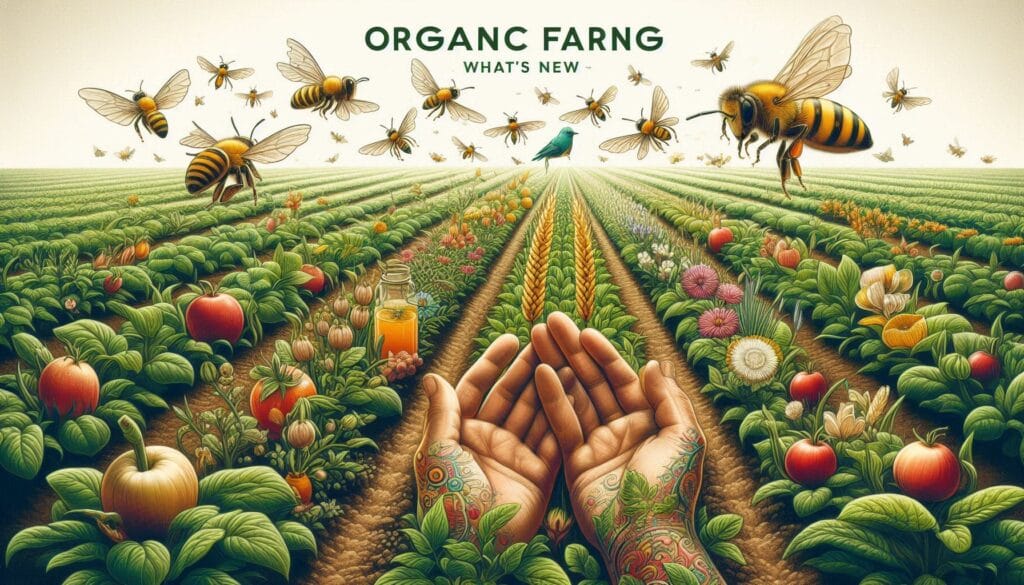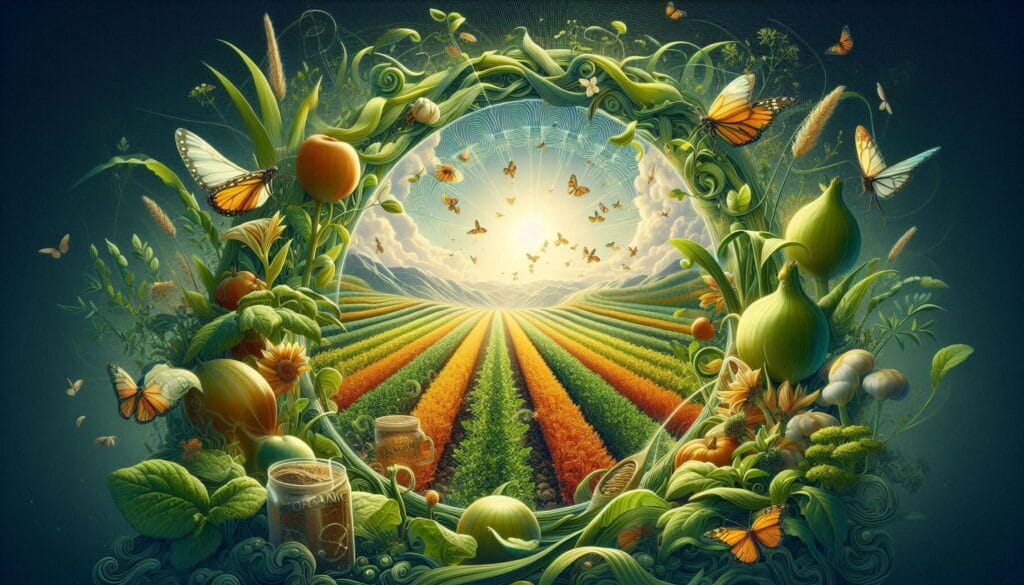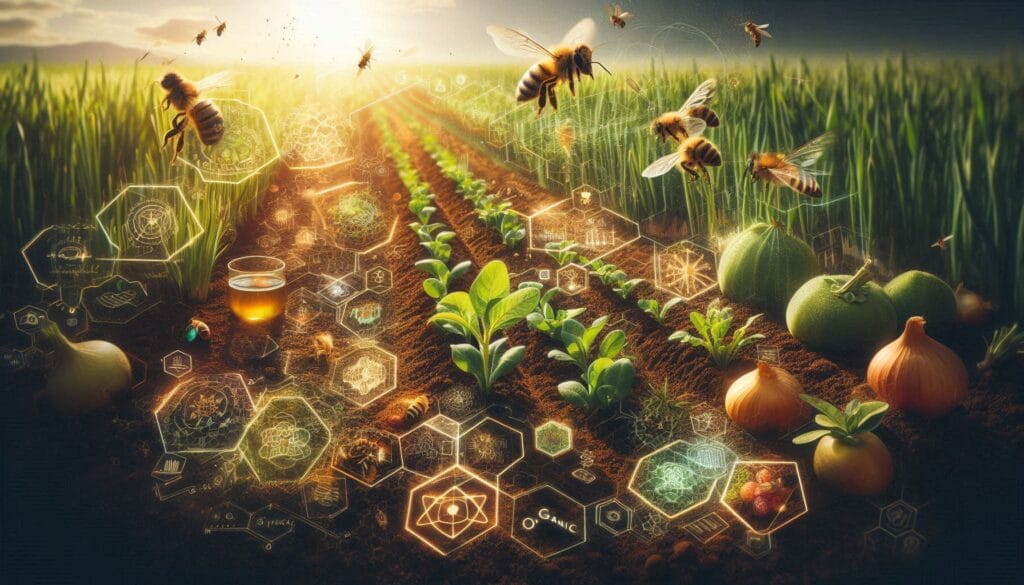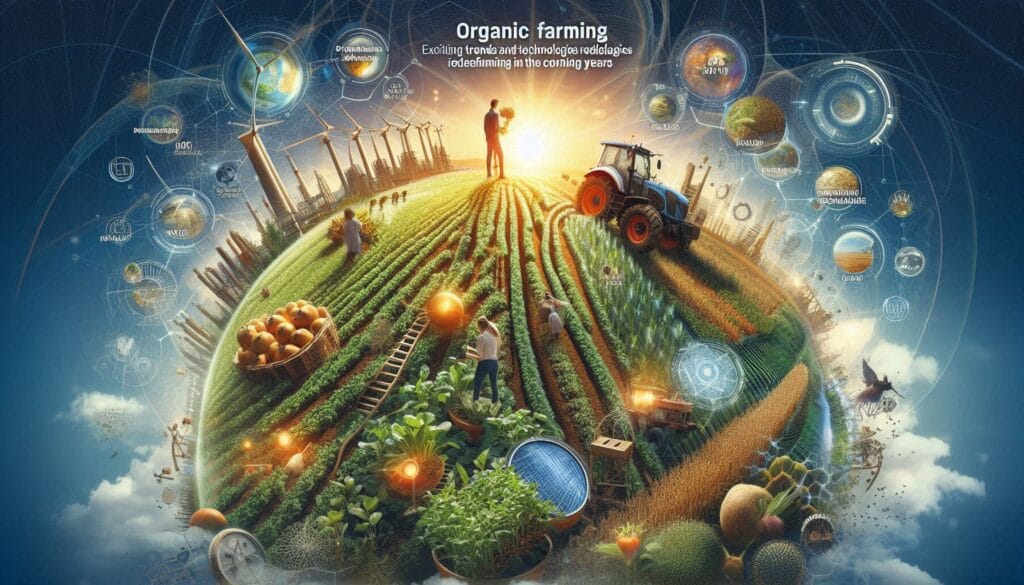Organic farming continues to evolve, embracing new technologies, practices, and philosophies that make agriculture more sustainable and efficient. As we step into 2024-25, exciting trends are shaping the future of organic farming. These emerging innovations not only aim to enhance productivity but also support environmental conservation and consumer satisfaction. In this blog, we will delve into the top trends and technologies redefining organic farming in the coming years.
1. Precision Farming with Organic Practices

Precision farming has revolutionized agriculture, and organic farming is no exception. By integrating technologies like drones, sensors, and GPS mapping, farmers can now:
- Monitor Soil Health: Real-time data helps track moisture levels, nutrient content, and pH balance.
- Optimize Resource Use: Precise application of water, organic fertilizers, and pest control measures minimizes waste.
- Boost Yields: Accurate data-driven decisions improve crop productivity without compromising organic integrity.
Example
A farm in Germany uses drones to monitor crop health, identifying areas needing attention and applying organic inputs only where necessary. This approach reduces costs and improves efficiency.
2. Regenerative Organic Certification
While organic farming focuses on avoiding synthetic inputs, regenerative organic farming goes a step further by emphasizing soil health, carbon sequestration, and biodiversity. In 2024-25, more farmers are seeking Regenerative Organic Certification (ROC), which ensures:
- Improved Soil Fertility: Practices like cover cropping and reduced tillage.
- Climate Resilience: Enhanced ability to withstand extreme weather conditions.
- Community Well-Being: Fair labor practices and local economic development.
Why It Matters
Consumers are becoming more conscious of not just organic products but also their environmental and social impact, making ROC a valuable certification.
3. Vertical and Urban Organic Farming
With urbanization on the rise, vertical farming and urban agriculture are gaining traction. These methods allow:
- Efficient Space Utilization: Growing crops in stacked layers or small urban plots.
- Reduced Transportation: Proximity to urban markets cuts down on carbon emissions.
- Fresh Produce: Urban dwellers get access to fresh, organic food.

Technologies Driving This Trend
- Hydroponics: Growing plants without soil using nutrient-rich water.
- LED Lighting: Energy-efficient lights tailored to plant growth.
4. AI and Machine Learning in Organic Farming
Artificial Intelligence (AI) and Machine Learning (ML) are becoming integral to organic farming. These technologies assist in:
- Pest and Disease Prediction: Identifying potential threats and suggesting organic solutions.
- Yield Forecasting: Helping farmers plan better and reduce wastage.
- Market Trends Analysis: Providing insights into consumer preferences and demand.
Case Study
An organic farm in California uses AI to predict pest outbreaks and recommend natural deterrents, saving crops and maintaining organic standards.
5. Plant-Based Biostimulants
Biostimulants derived from plants, algae, and microorganisms are gaining popularity. These natural products:
- Enhance Crop Growth: Stimulate plant metabolism and nutrient absorption.
- Boost Stress Resistance: Help plants withstand drought, heat, and pests.
- Improve Soil Microbiology: Encourage beneficial microbes that support plant health.
6. Blockchain for Transparency
Consumers demand transparency in their food supply chain, and blockchain technology provides just that. By recording every step of the process, blockchain ensures:
- Authenticity: Verifies that produce is truly organic.
- Traceability: Tracks products from farm to fork.
- Consumer Trust: Builds confidence in organic labels.
Future Outlook
More organic farmers and cooperatives are expected to adopt blockchain solutions, especially for export markets.
7. Focus on Biodiversity
Biodiversity is at the heart of organic farming. In 2024-25, farmers are:
- Planting Diverse Crops: Reducing monoculture practices.
- Encouraging Pollinators: Creating habitats for bees, butterflies, and other pollinators.
- Restoring Ecosystems: Protecting wetlands, forests, and other natural areas on farms.
8. Climate-Resilient Crop Varieties

As climate change impacts agriculture, researchers are developing organic seeds and crop varieties that:
- Tolerate Extreme Weather: Resistant to drought, floods, and temperature fluctuations.
- Maintain Nutritional Value: High-quality produce despite challenging conditions.
- Support Local Adaptation: Tailored to specific regional climates.
9. Consumer-Driven Trends
The organic market continues to grow, driven by:
- Increased Demand for Plant-Based Foods: More consumers are opting for vegan and vegetarian diets.
- Organic Beverages: Popularity of organic teas, coffees, and juices.
- Health-Conscious Choices: Greater emphasis on clean labels and minimally processed foods.
10. Collaboration Between Farmers and Researchers
Farmers are partnering with agricultural scientists to:
- Test New Methods: Trial innovative organic practices.
- Share Knowledge: Participate in workshops and knowledge exchanges.
- Shape Policies: Advocate for better support and recognition for organic farming.
Conclusion
Organic farming in 2024-25 is marked by innovation, sustainability, and consumer-driven change. From precision farming and regenerative practices to urban agriculture and AI, the future is bright for organic farmers willing to adapt and embrace these trends. By staying informed and open to new ideas, organic farmers can continue to thrive and lead the way toward a more sustainable agricultural future.

5 Quick Q&A About Small-Space Organic Farming Trends What’s New for 2024-25?
1. Question: What is a likely trend regarding technology adoption in organic farming?
Answer: Increased integration of precision agriculture technologies, such as GPS-guided machinery, sensors, and data analytics, for optimized resource management (water, fertilizer, pest control) while adhering to organic principles.
2. Question: How might consumer demand influence organic farming in the coming years?
Answer: Growing consumer awareness of the link between food and health, and increasing demand for transparency in food production, will likely drive further growth in the organic sector, with a focus on local sourcing and reduced environmental impact. Expect increased demand for organic products with specific certifications beyond standard organic (e.g., regenerative organic, biodynamic).
3. Question: What are some potential challenges facing organic farmers in 2024-25?
Answer: Challenges include: managing increasing production costs (labor, inputs), maintaining profitability in a competitive market, navigating complex certification processes, and adapting to climate change impacts (drought, extreme weather events).
4. Question: What role might government policies play in shaping the future of organic farming?
Answer: Governments are likely to continue to play a crucial role through subsidies, research funding, and regulatory frameworks that support organic production and promote sustainable agriculture practices. Expect increased focus on policies that incentivize practices with climate mitigation benefits (e.g., carbon sequestration in soils).
5. Question: What trends might we see in organic supply chains and marketing?
Answer: Expect further development of direct-to-consumer sales channels (farmers’ markets, CSAs, online platforms), increased collaboration between organic farmers and food processors/retailers, and greater emphasis on storytelling and transparency in marketing to build consumer trust and brand loyalty. Blockchain technology may be used to enhance traceability.



Pingback: You Motivated in Organic Farming in india